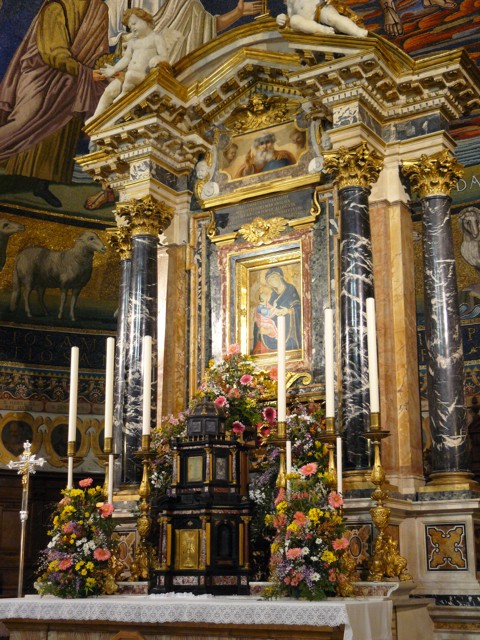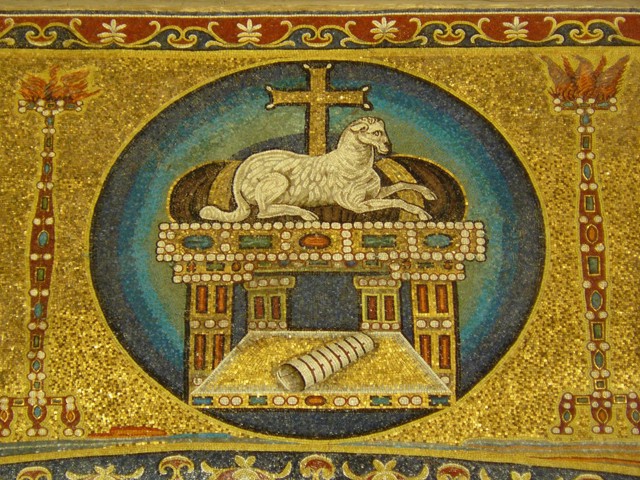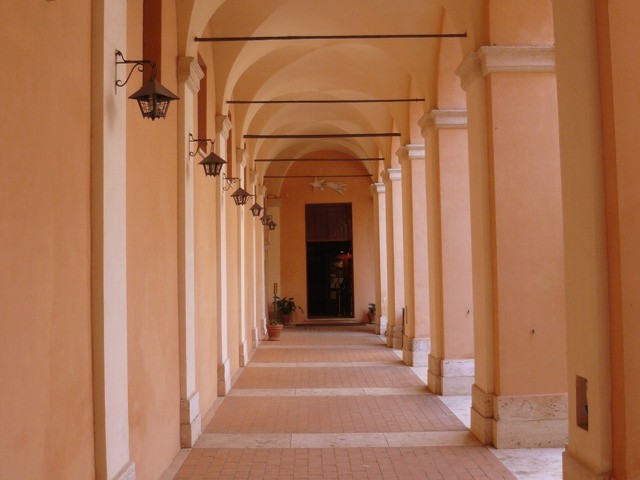This mosaic dates from 527-530 AD. The dominating figure in the center is that of Christ the Judge, who stands above the dramatically colored clouds, clothed in a clasped toga and a stole signifying a learned man. To approach Christ, it is necessary to cross the Jordan River, symbol of Baptism and life giving grace. The Apostle Peter presents Cosmas and the Apostle Paul presents Damian so that they may receive the crown of their martyrdom.
The veneration of this lovely icon of the Madonna dates back to the foundation of the Basilica by Pope Felix IV (526-530). A notable promotion of devotion was given by Pope Saint Gregory the Great (590-604) towards the end of the 6th century.
The ancient image of the Madonna was located in the primitive Basilica between the altar and the mosaic, surrounded by a large number of devotional “ex-votos.” The icon, which is now above the main altar in the Upper Church, dates from the 13th century. Actually, it is a new edition painted over the more ancient picture. Originally the painting represented an image of Mary with the complete figure seated upon a throne. The painting was later cut short to adapt it to the new altar.
On March 4, 1651, the head of the Virgin and that of the Child were adorned by the Vatican Chapter with crowns of sculpted gold. These disappeared in the sacrilegious theft of November 29, 1988.
The title “della salute” originally referred to the salute, or Mary’s greeting to Saint Gregory, but in the course of time, as the Basilica of Sts. Cosmas and Damian, the physician-martyrs, was a shrine of healing, the term “salute” came to mean “of Health.”
On a rectangular piece of black marble is written the following in Latin: This image translated from the old building to a more noble setting spoke thus to Blessed Gregory: “Gregory, why is it that you no longer come to salute me as you used to do whenever you passed by here?”











